What’s in The Cloud? And why everyone want’s a piece of it.
Introduction
I was working on my project, and suddenly my daughter asked me, papa, what are you doing?
I said I am working on “The Cloud”, and she rolled her eyes.
She gave a mischievous smile at first, and then a sarcastic one. I tried to tell her, what cloud is, but to no use. She won’t trust my explanation over her school science Textbook.
Not very long ago, I was confused myself. After all, the cloud is certainly not a place to work. It’s something which is much awaited in tropical summer.
This article is my attempt to explain the “other” cloud to my daughter, and anyone else who wonders, What is “The Cloud”?
Not long ago, Clouds were the collection or aggregation of condensed water, causing rains and hailstorms.
This is no longer the case. Don’t get me wrong, we still get rains from clouds only, but nowadays if you search for clouds, the rain clouds are not the first result you would get on the World Wide Web. Like many other borrowed words in tech from the real world, this one has grossly overshadowed the old meaning.
So what is this new “Cloud” that has overcast the old one (What an Irony…)
What is Cloud Computing?
The Cloud” is a network of connected servers (a kind of computer hardware, similar to your Personal Computer’s CPU but much larger in all aspects) that are accessed over the internet. “The Cloud” is not only the physical servers but also comprises of the Software, Applications, and Databases that run on these servers.
What it means in simpler terms is, when instead of using the local storage of your computer and running the software installed locally on your computer, you use the storage or the software installed on some server which is located very far from you, and you access it using the internet, then you are using “The Cloud”.
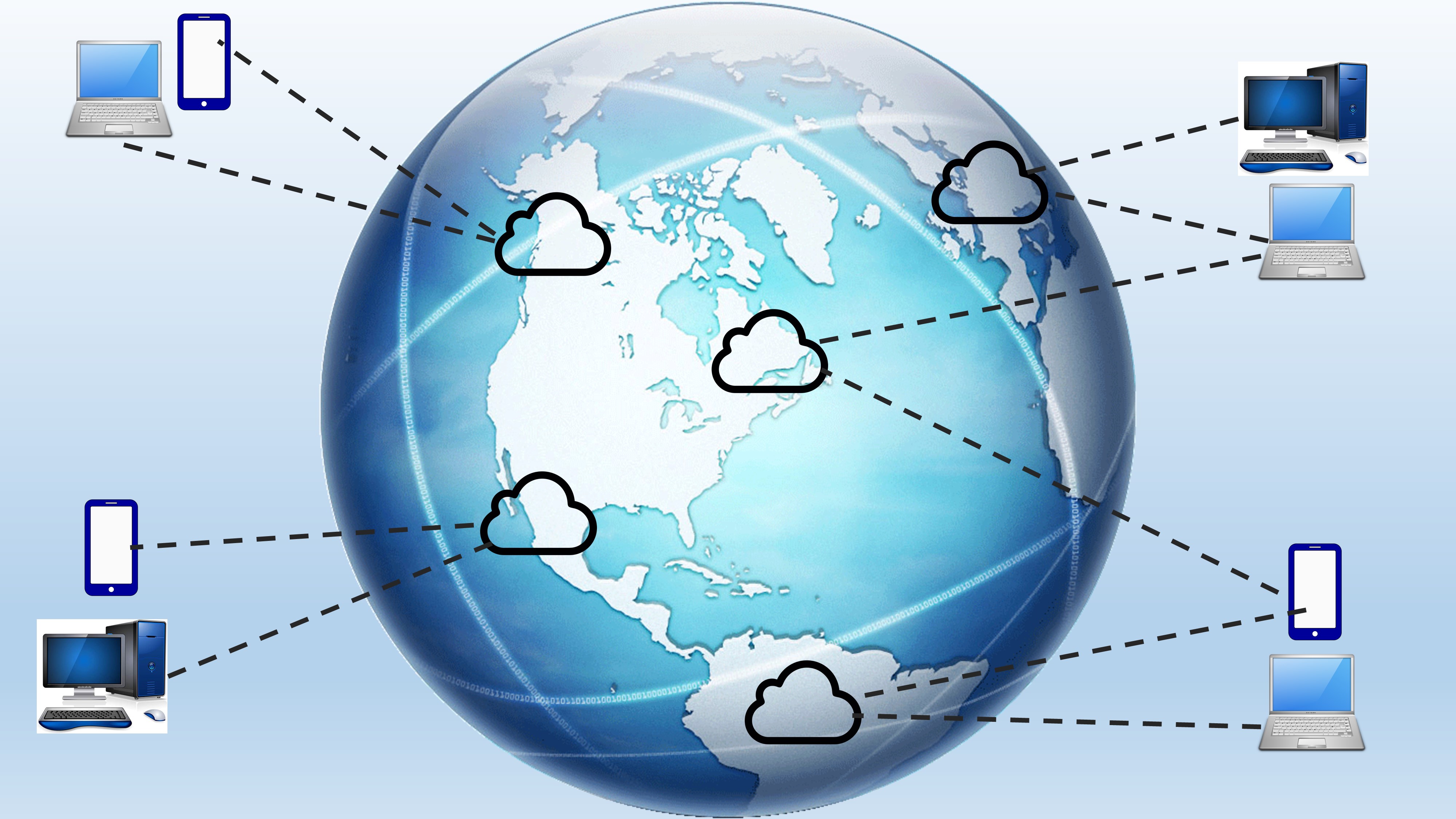
So “The Cloud” is the shared infrastructure that includes hardware, software, and services. You use any one of them or any combination of them.
Now, this brings up the next logical question. Where are these servers kept? In other words, where is my Cloud?
Where is “The Cloud”?
Cloud servers are kept in Data Centers. These Data Centers are spread all around the globe.
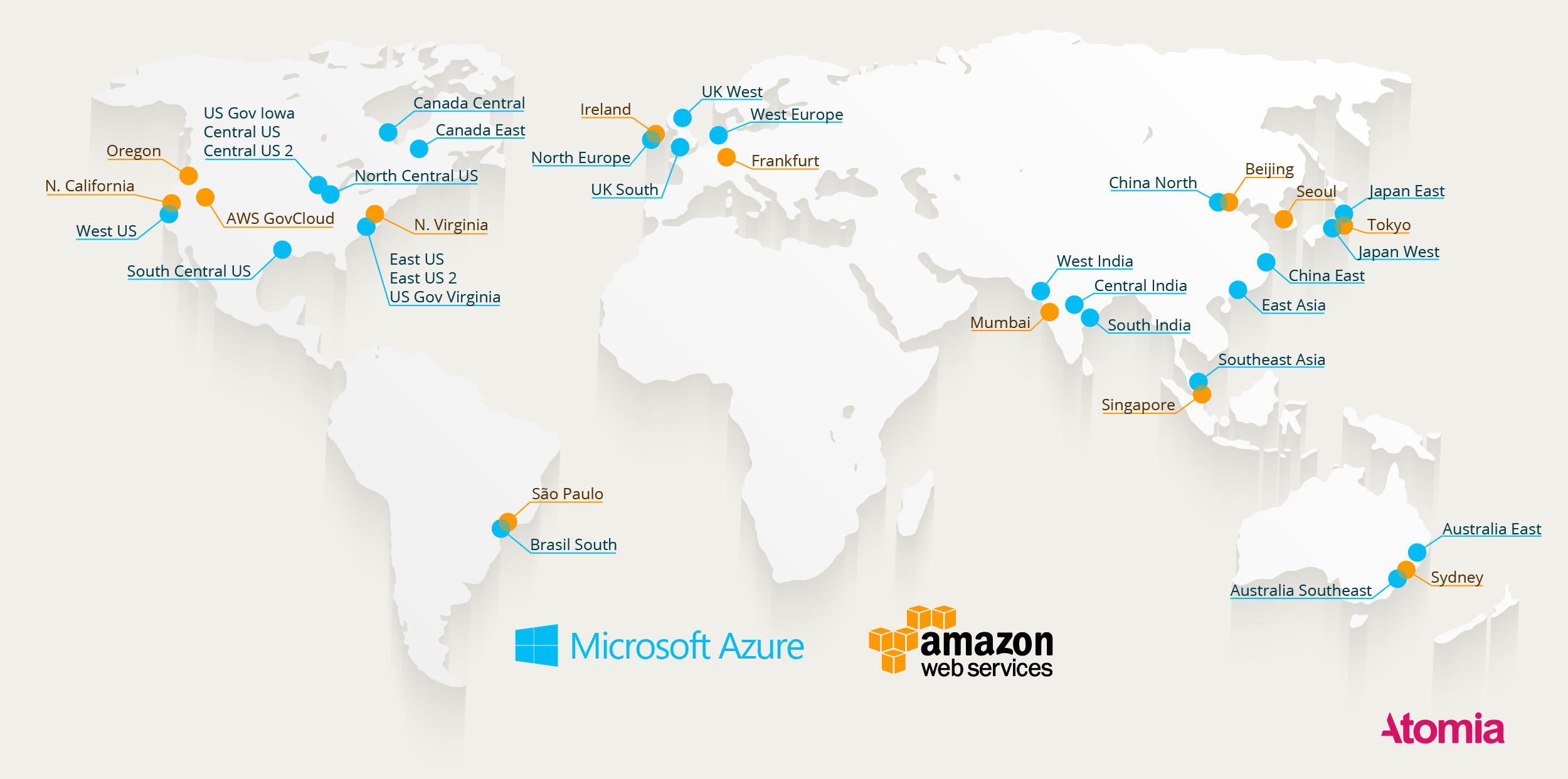
When you use the cloud, you don’t have to worry about managing the servers, or the software which you use on the cloud, or even the database which is stored on the cloud.
So The Cloud is in Connected Servers (see the server rooms in the image below) and the servers are housed in Data Centers and Data Centers are located around the world, and connected by the internet.
What is NOT Cloud Computing?
What cloud computing is not about is the local storage and local operations. When you are working on your local computer (Desktop or Laptop or even Local Supercomputer), it’s not the cloud. When you and your friends are connected through a local network (not the internet) and use the shared power of the network, it’s still not the cloud. Because everything you are using is locally available, close to you. So any dedicated Network Attached Storage (NAS) device is not cloud.
Many companies have their own servers and bigger companies have their own data centers with many servers. When the employees of those companies access those servers using companies local network (maybe from a distance – Your servers may be in Mumbai, but employees in the Delhi office also access it), it is still not the cloud. So all in all, storing data at home or office network or networks is not the same as the cloud.
It’s Cloud computing only if it’s on the internet. You either use it over the internet or at the very least, sync that data over the internet.
Why Cloud Computing?
The way we start using computers while in school or office was one disconnected independent unit, which used to sit on our desk at home or office. It had its fixed configuration, which was either not upgradable or limited upgradability. For example, it’s not easy to change the processor. What if for some specific task, you need more computing power?
You can increase the RAM to a certain extent (at a high cost), but what if you need higher RAM for a very short period and specific work.
You can’t have a very high GPU due to the high cost involved, but you need higher GPUs for many computing operations for short periods. How to overcome that?
What if we combine all the laptops of the friends, and that gives a combined higher processor power, high RAM, and High GPU. Also, what if it increases the combined storage. That would be a wonderful thing.
Cloud is something very similar, only more efficient. And even more flexible.
By using cloud computing, users or companies do not have to manage the servers and infrastructure and at times, software as well, themselves.
Like for example, when you use Gmail as the email client even for your office work (Gmail gives business solutions as well), you don’t have to maintain your email server, run your own software for managing your emails, and even not bothered about the security of your data (its google’s lookout now).
Why is it called “the cloud”?
The “Cloud” was a technology industry slang, which became mainstream with time. In the early days of the internet, the servers and the networking infrastructure were represented as a cloud in the technical diagrams. As more and more work moved from the local computers and local servers to the internet, more and more people started talking about moving things to “The Cloud” as a shorthand name for the network of servers and at times for the internet itself. Slowly, the name became mainstream and is now being used for all networked systems whether privately used or shared publicly.
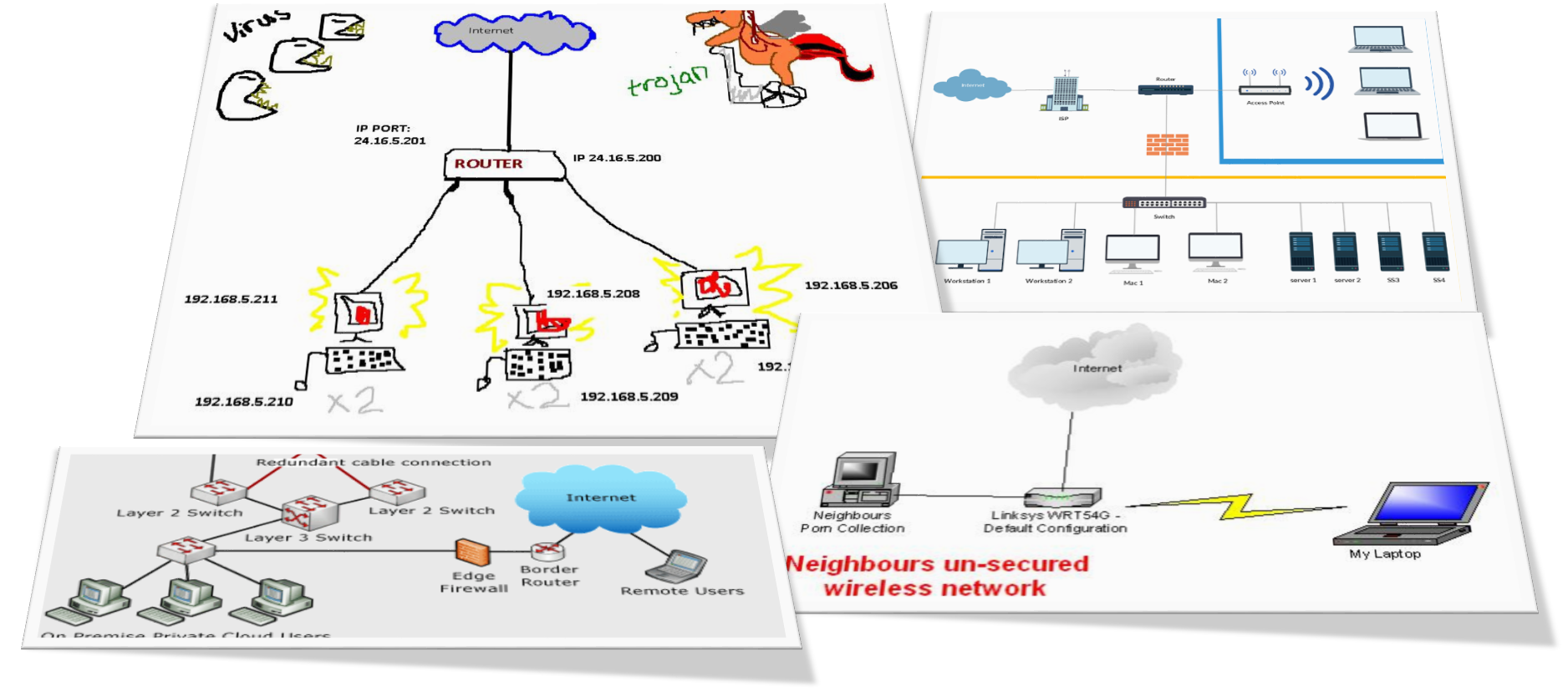
Technical Diagrams showing the Internet as a Cloud. Source: https://www.techrepublic.com
How’s “The Cloud” different from the internet?
When I say the internet, I mean the network of networks that connects computers across the globe. The computers are of two types, client (you) and server (on which websites are saved). So the internet is essentially a typical client-server model connected to form a network. Here the servers store the websites and respond to client’s requests for some information.
Cloud computing differs from this model in the respect that on the cloud, the servers are not just responding to the requests, but also housing the software, running the programs, and storing the clients’ data, all at the same time.

Internet Vs Cloud, Source: Image created by Author using Wikimedia images.
Hence the Cloud could be understood as a technology that makes use of the internet as the medium of communication for the delivery of its services.
Who owns the Cloud?
So by now, you have understood that Cloud is nothing but a network of DataCenters which house hundreds of Servers, and these data centers are connected in a network using the internet. Hence whomsoever owns these huge datacenters, owns that particular cloud. If this came as a surprise, let me reemphasize it. “The Cloud” is not one whole entity, but there are many clouds owned by different entities. And some of the world’s biggest corporations own the biggest slice of the pie. As is apparent from the chart below, only 6 companies own 75% of the cloud worldwide. These are AWS by Amazon, Azure by Microsoft, Google Cloud, Alibaba Cloud, IBM Cloud, and Salesforce.
Examples of Cloud Computing
If you use a computer or mobile device which is connected to the internet, at home or at work, you most certainly connect to the cloud every day. It may be the cloud application like Google Gmail or Google Drive, watching movies or shows on Netflix, or storing your files online on Dropbox. According to a recent survey, 92% of organizations use the cloud today (link to the website for survey results) and most of them have plans to use the cloud more by the next year.
When you use the software, applications, storage, or any other computing service which is based solely on the internet, you are using Cloud. But when it comes to the many application a non-business user uses, the line between the cloud application and application running on a local computer gets blurry. That’s because the cloud has become part of almost everything we use nowadays.
You have installed MS office (Word, Excel, PPT, etc) on your computer, hence its local software. But when you use OneDrive, it’s cloud computing. The same excel file if you share and open on OneDrive, it’s cloud. To make matters more confusing, all of this software now have their cloud counterparts as well. Microsoft offers its Office software on the cloud which is purely web-based and goes by the name “Office for the web”. They are web-based versions of your Word, Excel, PowerPoint, etc, and accessed using the web browsers (like chrome or safari). When you use the “office for the web”, there is no need to install anything on your computer.
Here are some other cloud computing apps you might already be using, on your computer or your mobile devices (tablets, iPads, or Mobile phones).
· Google Drive
· iCloud
· OneDrive
· DropBox
· Slack
· Zoom Meeting
· Microsoft Teams
Even beyond them, whenever you watch a movie on Hotstar or Amazon Prime or send an email on Gmail or Hotmail, or use services like Google Translator or Google Docs, you are using the Cloud.
Essential Characteristics of Cloud Computing
The American National Institute of Standards and Technology under the US Department of Commerce lists the following characteristics as essential for cloud computing. You can access their report on The NIST Definition of Cloud Computing, Special Publication 800-145.
On-demand self-service
You can use computing capabilities, such as server time and network storage you want, whenever you want and pay for what you used, per-use. Just like your mobile bill or electricity bill. So this makes cloud service like a utility, to be used and paid per-use. Also, to do so, you will be able to do it without requiring human interaction with each service provider.
Broad network access
You must be able to access the cloud services from anywhere over the internet using any kind of device (e.g., mobile phones, tablets, laptops, and workstations). All you need is a decent internet connection and any device connected to that internet.
Resource pooling
The cloud’s resources are pooled to serve multiple consumers using a multi-tenant model, with different physical and virtual resources dynamically assigned and reassigned according to consumer demand. The customer generally has no knowledge or control over the exact location of the cloud (e.g., country, state, or datacenter), except for some very big corporations who keep track of the backend as well.
Rapid elasticity
This is one of the biggest plus points of Cloud. It will give you as much resource at any point in time, as you need. You can imagine the cloud expanding and striking, as much as possible without affecting other clients who share it. Say, for example, your business has peak hours, and during that your needs expand multiple times, it can be provided by the cloud by expanding to accommodate your request. And then releasing that resource when your need shrinks, automatically.
Measured service
You can measure how much you have used, just like your electricity or water bill. Cloud systems automatically control and optimize resource (e.g., storage, processing, bandwidth, and active user accounts) use by leveraging a metering capability. Resource usage can be monitored, controlled, and reported, providing transparency for both the cloud operator and consumer.
How history is repeating itself
History has a funny way to repeat itself, but tech is one of the fields where it’s least expected. However, if cloud computing has any elder to find, one has to go back 70 years or so. I know this would sound not so convincing, so let me take you back in time.
Unbelievable it may sound, but the present day’s concept of “Cloud Computing” has its roots back in the 1950s, when large-scale mainframe computers were used in some corporations. The mainframe computer’s huge hardware was housed in what could be called a “server room” (since a single mainframe computer took almost the entire room). As the mainframe computers were very expensive, any organization would not be giving a separate computer to individual users. Hence, multiple users used the same computer, and access its data storage as well as CPU, from their workstation using terminals. Those terminals were called “Dumb Terminals” as they were only to access the main computer, and did not have their own memory, storage, or CPU.
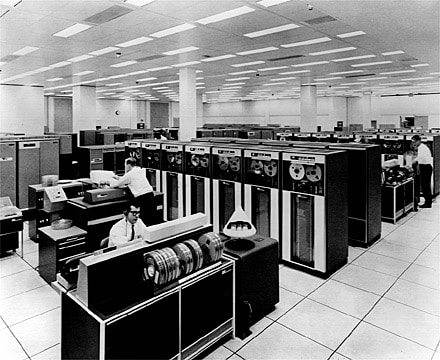
As the costs of computer hardware slowly came down, more users could afford to purchase their own personal computers. But now with time, another problem arose. With the need for increased speed and storage, individual computers (or servers for organizations) another kind of paradigm shift happened. People again started thinking to combine resources (say CPUs and Servers). They again started thinking about sharing the resources, just like they shared the mainframe computer in the 1950s. Because of this paradigm shift, the most basic understanding of “cloud computing” was born online. The only difference was, this time internet was there to help overcome the boundaries of distance and geographies.
Now you can think of “The Cloud” as one big mainframe computer (though not housed in one server room, but split across the globe into many data centers) which is accessed by users using their “Dumb Terminals” (PCs or Mobiles), using the power and network of the Internet.
The transition from Mainframe to PC to Local Area Network to finally Cloud, Source: Created by Author
Advantages of using Cloud Computing
The advantages of using “The Cloud” are many, and the ones mentioned here are mostly the top-of-mind ones. However, each organization based on its size and type of business derives one of these and much more using the cloud. This is obvious from the fact that over the years, the revenue generated by cloud computing has exceeded any prediction made in this regard.
If you are in the business of fashion merchandise or selling groceries, why would you like to get involved in buying and maintaining complex computer systems, that too which gets outdated every few years. If you are running a water purifier selling network, do you want your sales guys getting worried about their hard drive crash, updating operating systems, or worrying about the anti-virus? Add to this the worry of your customer data theft from local machines and illegal software on your expensive office computers.
You can easily leave all this responsibility to the experts. Cloud computing lets you buy in only those services that you want, for as long as you want, and also keep updating them. This saves lots of hassles of spending upfront for buying expensive machines and maintaining an IT department to manage and maintain them.
You can also add extra services (or remove the unwanted ones) at any moment if your business needs change, and that too without waiting for weeks for new machines to arrive or new software to update.
Unlimited Storage is always available:
When you need more storage, you buy hard drives to store them. But when your storage needs are changing you can simply rent storage on the cloud, and pay for the storage used. You can increase or reduce your storage at will, and you don’t have to invest in expensive storage devices.
Access the data from anywhere:
When you store on the cloud, your data is available to all the users you authorize, all the time. They can access it anywhere across the globe using the internet. This is so much better than having to come to one office to access the data if it was there in local storage.
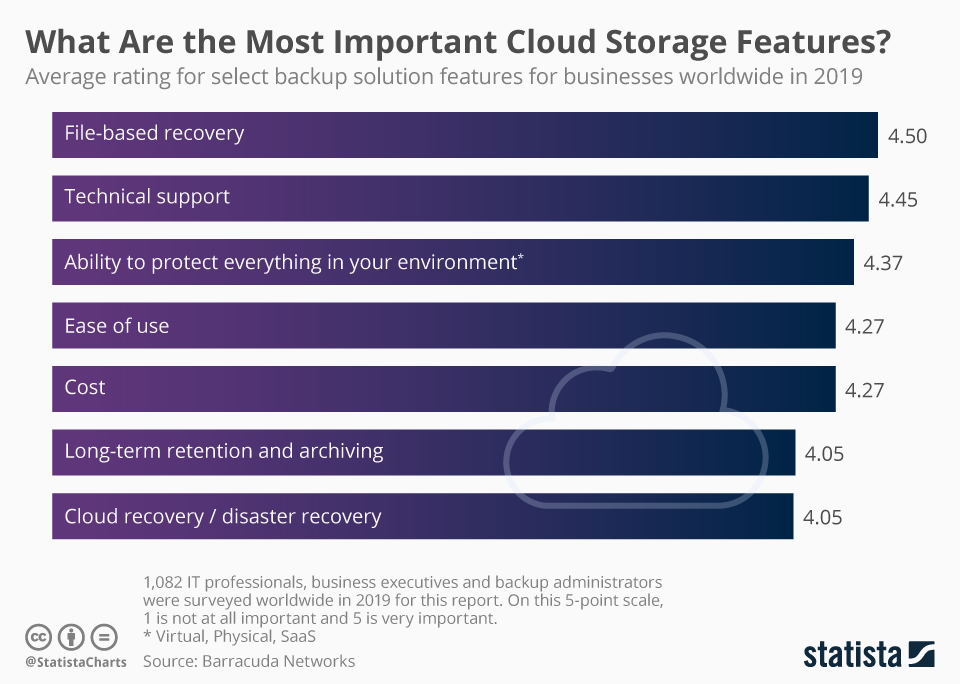
Improved collaboration:
Your people now don’t have to fly from Sydney, Chicago, and Delhi to New York for attending a meeting, neither you need to book expensive conference halls. All you need is the Cloud solutions like Skype and Zoom and Microsoft Teams. Moreover, now you don’t even need expensive computers when you can collaborate using your mobile phone or inexpensive Chromebooks (inexpensive laptops running on Google’s Chrome-based operating system) using the cloud.
Cost Saving:
Now you do not need to invest in expensive hardware like servers, storage, and computers to store tonnes of data. You don’t even need to buy expensive software licenses at a huge upfront cost (multiplied by the users). You can simply rent storage space, computing power, and even software solutions on the cloud, and pay for only what you use. Cloud lets you save some or most of the costs and effort of purchasing, installing, configuring, and managing your own on-premises IT infrastructure.
Consistent Updates:
In the tech world, technologies get outdated sooner than one can predict. When you use the cloud, you don’t buy expensive hardware which will be outdated soon. Rather your cloud service provider keeps updating it for better service. Also, the software upgrade is not costly as you rent the same and do not own any one particular version of it.
Disaster Proofing:
In case of any disaster, your local machine and databases are prone to lose and damage. However, on the cloud, it’s spread over across the globe, with backup as well. Hence no more data loss due to a hard drive crash or earthquake.
And there are many more …
Disadvantages of using cloud computing
Nothing in this world is perfect or without flaws. “The Cloud” is no exception.
- Convenience and flexibility come at a price. In long term, the overall cost may become higher for high usage organizations.
- You (and all the users of your organization) need high-speed internet all the time. So your business becomes dependent on your internet service provider (ISP).
- Cost of the Internet and the data we use while connecting to the cloud.
- A cloud outage is a real thing. A longer outage may disrupt your business at critical hours.
- You can buy only what the cloud service providers are offering. They may change or discontinue a product that might be critical to your business, and you can’t do anything about it. eg. Google docs dropped support for older office file formats like .doc, .xls, and .ppt at end of 2012.
- Giving the people full-powered computers with unrestricted access individually has brought some innovative and creative products, which might get restricted when working with lesser powerful machines on the cloud with a limited set of tools. (Purely my opinion, not based on any data.)
That’s the rub. The ISPs, telcos, and media companies control your access. Putting all your faith in the cloud means you’re also putting all your faith in continued, unfettered access. You might get it, but it’ll cost you. The more bandwidth you use, the more it costs.
Conclusion
With all its flaws and drawbacks (which aren’t many), the cloud is gaining space. It is getting popular among individuals as well as businesses every passing day. About 90% of the companies are already on it, and the experts say that 60% of the workload was on the cloud in 2019. This was 45% in 2018. It is projected that cloud data centers will process 94% of the workload in 2021. The global cloud computing market is expected to reach $623.3 billion by 2023. The market size in 2018 was only $272 billion.
These stats summarize the future of the world Wide Web. The trend shows year-on-year growth in Cloud, ever since it was introduced. At this rate, the question is not IF but WHEN in the near future, traditional data centers will be obsolete?
“Cloud is about how you do computing, not where you do computing.” – Paul Maritz, CEO of VMware
The media shown in this article are not owned by Analytics Vidhya and is used at the Author’s discretion.
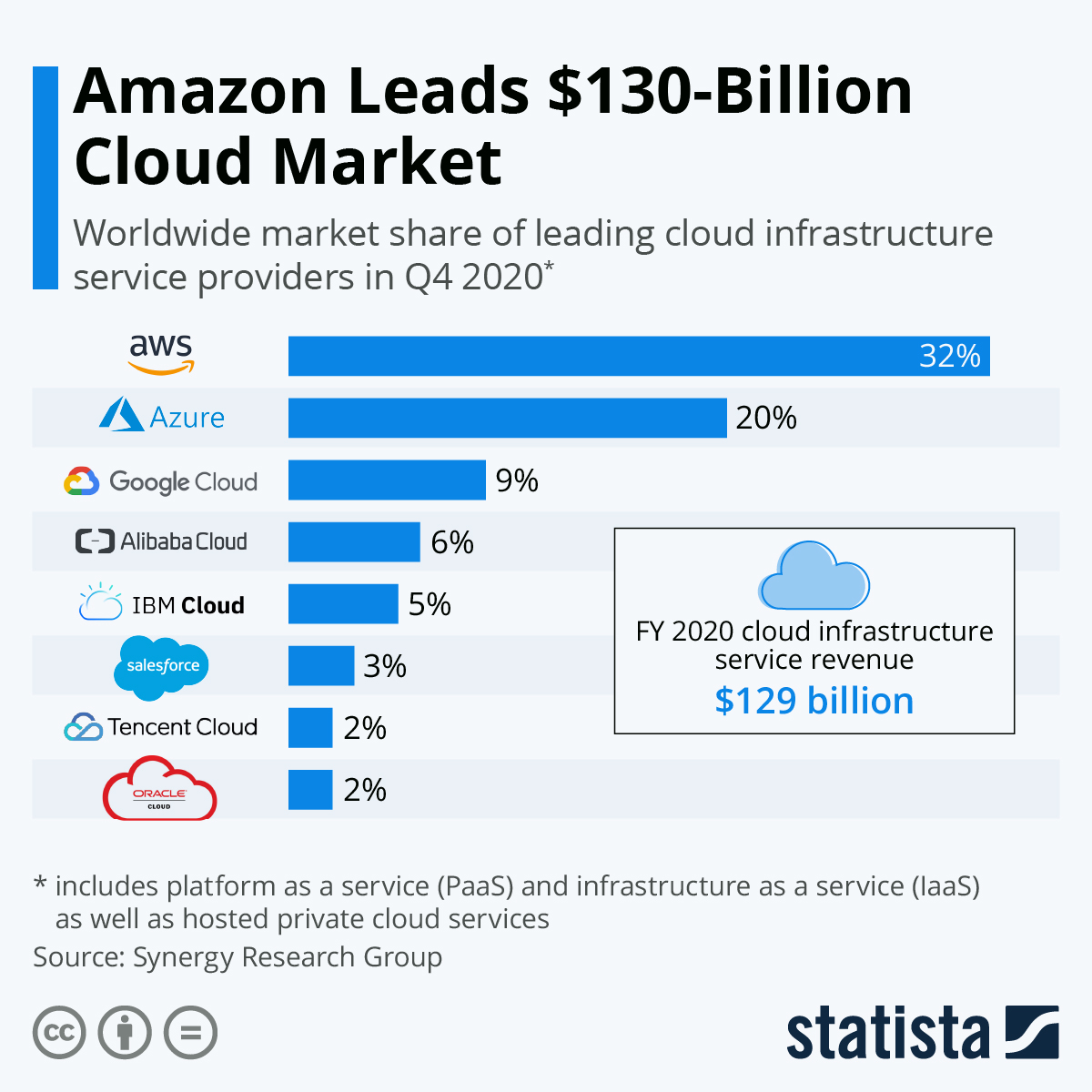










Excellent.... explained brilliantly... Even layman like me can understand. Thanks.
Nilabh, very well explained. Thank you.